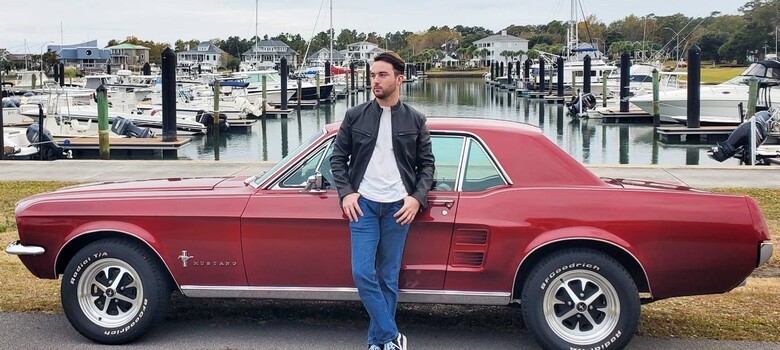Epilepsy Surgery in Infancy Allows Toddler to Walk, Talk, and More

Left: Lily Twiddy during a hospital stay in 2021. Right: Lily at her home in Fayetteville, NC in 2024.
Seven-month-old Lily Twiddy was having up to 30 seizures a day despite taking six different epilepsy medications. Doctors worried that continued seizures could prevent Lily from learning to walk, talk, and develop normally. In June 2021, Duke epilepsy experts surgically removed an abnormal part of Lily’s brain that was causing her seizures. The operation stopped Lily’s seizures completely. Now the active toddler loves playing outside and is gaining more motor function and language skills every day. “Epilepsy surgery saved our daughter’s life and gave her a chance to thrive as a happy little girl,” said Lily’s mother Holly Twiddy.
Duke Discovers Cause of Seizures
Local doctors in Fayetteville, NC diagnosed Lily with epilepsy when she was just a few weeks old. Lily’s parents transferred their daughter’s care to Duke, where experts discovered that cortical dysplasia -- an abnormal collection of brain cells -- was triggering her seizures. Even though this type of epilepsy usually doesn’t respond well to medications, Lily’s parents were hesitant to consider epilepsy surgery when epileptologist Muhammad Zafar, MD, suggested it.
“We were against surgery at first because we couldn't imagine our baby girl going through something so major,” Holly Twiddy said. “A few months later, we realized that surgery was her only chance to have a somewhat normal life.”
Early Intervention Protects Brain Function
Duke specialists used surgically placed grid electrodes to map Lily’s brain and function down to the millimeter. Testing revealed that the cortical dysplasia was in an area of Lily’s brain that controlled movement on the right side of her body. This meant she could experience weakness on that side after the surgery, but Dr. Zafar was confident Lily’s brain would learn to compensate.
“Because Lily’s young brain was still developing motor function, if one section of the brain were removed, another part of her brain could take over to control her right side,” Dr. Zafar said. “If we did the same surgery in a child who was four or five years old, we may not get the same outcome because the critical period of development for controlling the right arm and leg had passed.”
Epilepsy Surgery Provides New Normal
Duke pediatric neurosurgeons removed Lily’s cortical dysplasia during a 10-hour surgery. She hasn’t had a single seizure since. While Lily lost motor function on her right side and experienced some developmental setbacks after the surgery, she made quick progress and sat up on her own for the first time just four weeks later.
Today, Lily has regained much use of her right arm and leg and is getting stronger every day. She took her first steps at 20 months old and is speaking her first words. Twiddy describes her daughter as a feisty, smart, independent toddler -- a daredevil who loves the outdoors.
“Without the surgery, Lily would have lost function on her right side eventually and would have never progressed developmentally past a certain point due to her constant seizures,” Dr. Zafar said. “Doing the surgery early gave her a chance to learn and grow.”
Ask Your Child’s Doctor About Epilepsy Surgery
When other parents of children with epilepsy reach out to Twiddy with questions, she encourages them to find out whether their child is a candidate for epilepsy surgery. “Duke changed Lily’s life so much. I don’t know if she would be with us today if we hadn’t gone through with surgery. All you can do is ask.”
UPDATE
As of June 2024, Lily has been seizure-free for three years. Her mother Holly Twiddy said Lily continues to gain independence, verbal skills, and balance. Lily "lets nothing get in her way," Twiddy said, and will be starting preschool soon.




